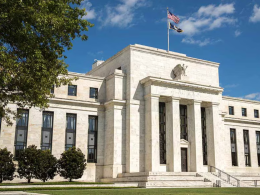What is the significance of this discord between paper and physical supply on the Comex? Recall, that over 800 million ounces traded each day in April on that market. Further, consider that as at the end of April there were only 33 million ounces of registered inventories to back up all of that paper trading. Just imagine if a mere 5% of all of that buying actually stood for delivery; the entire inventories would be more than wiped out. Yet despite the steady erosion of these already scant Comex inventories - a characteristic which would surely be interpreted as most bullish in other commodity markets - the price of silver has actually declined since April. We endeavour to provide a framework for understanding this phenomenon below.
Those who were following the developments in the silver market in April and May (we note that there were many who were) will likely recall that the CME Group raised both initial and maintenance margins five times within less than a two week span effectively raising the minimum amount of capital required to participate in the silver futures market by 84%8. This is significant due to the amount of leverage in the futures market and also due to the losses resulting from the precipitous selloff which began on Sunday, May 1st, when several thousand contracts were wantonly dumped onto the very thinly traded after-hours silver futures market causing the silver price to plunge 13% within the span of less than 15 minutes9.
For example, consider a hypothetical speculative trader who went long, say 200 July 2011 SI futures contracts on April 28th. At that time this trader would have been required to post an initial margin of $2.565 million for a position of one million ounces of "silver" and thus would have been levered 18.5 times10. Below we present what the trade blotter for this trader might look like over the next few days assuming he maintained his position.

Following the initial trade, each day the trader’s positions would be marked-to-market and any losses or gains would be applied against his account’s equity balance. Should the losses on the position bring the equity balance below the maintenance margin level, the trader would be required to deposit the additional capital required to bring the equity in the account back up to at least the initial margin requirement level.
While the margin increases alone would have forced a decision for this leveraged long to either post the additional margin or close enough positions to bring margin balances in line with substantially higher requirements, the trader was actually fighting a battle on two fronts. This is because in addition to the margin increases, the trader was also experiencing massive losses to his capital due to a rapidly falling silver price. So it is also important to consider the extent of losses to the trader’s equity following the precipitous drop which began on the evening of May 1st. In our scenario, before finding a bottom around May 17th, the cumulative losses would have amounted to over $14 million, or over five times the initial margin deposit of $2.565 million that was required to take on the position on April 28th. This meant that with margin call after margin call, the capital committed to the position ballooned almost 700% by the time the silver price finally bottomed in mid May. The significance of such a dramatic erosion of capital on a leveraged position cannot be overstated, particularly in the context of rising margin requirements. The CME Group would know this very well, and so it strikes us as particularly suspect that they would continue to raise margin rates in the face of such a sharp selloff. A selloff, we might add, which emanated from highly unusual trading activity on May 1st that, in our opinion, just reeks of manipulation. How else can one explain the dumping of several thousand SI futures contracts within the course of 15 minutes, in one of the most illiquid hours of trading, without seemingly any regard for price or a fundamental catalyst to speak of11? Though we will let the reader connect the dots as to what the intent of the CME Group and the seller’s of SI futures contracts on May 1st really was, we can certainly observe what effect these actions had on the market by looking further into the weekly Commitments of Traders (COT) reports published by the CFTC.













